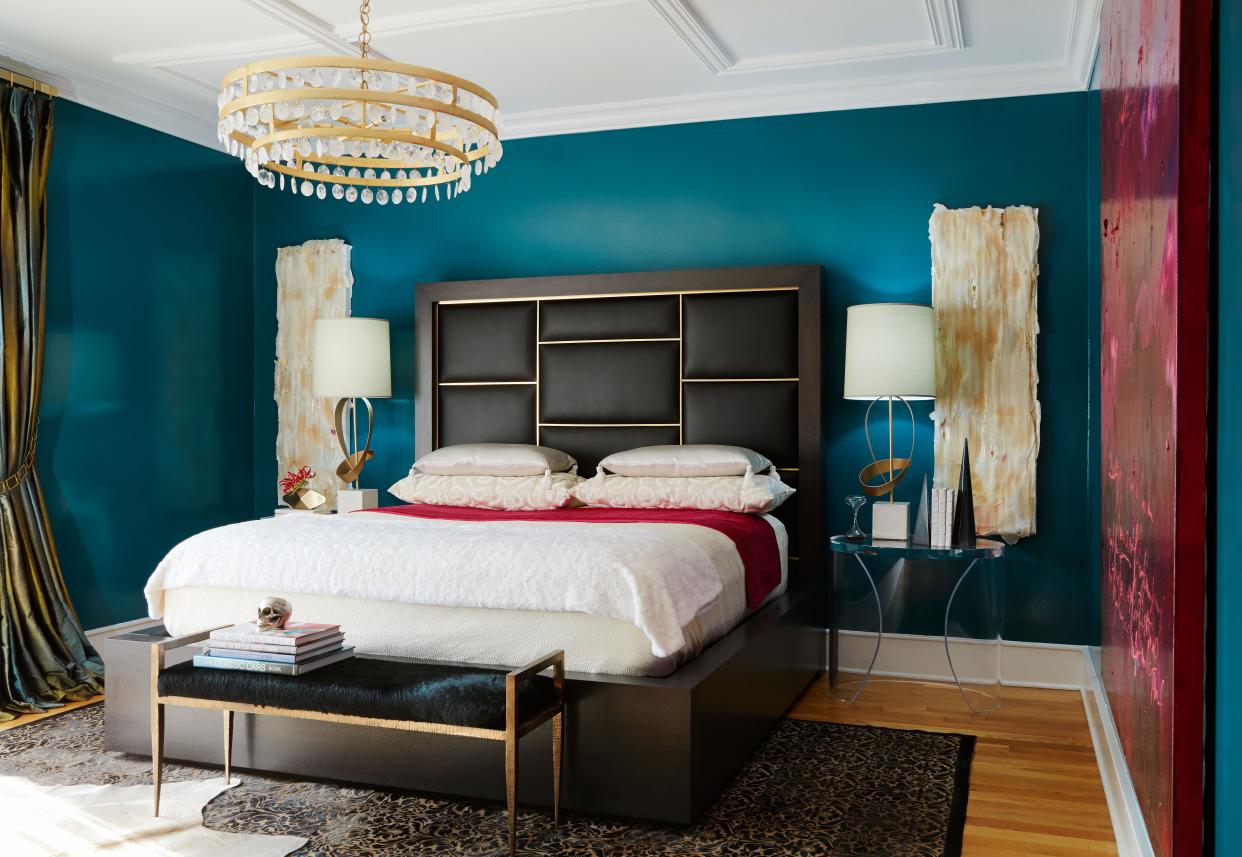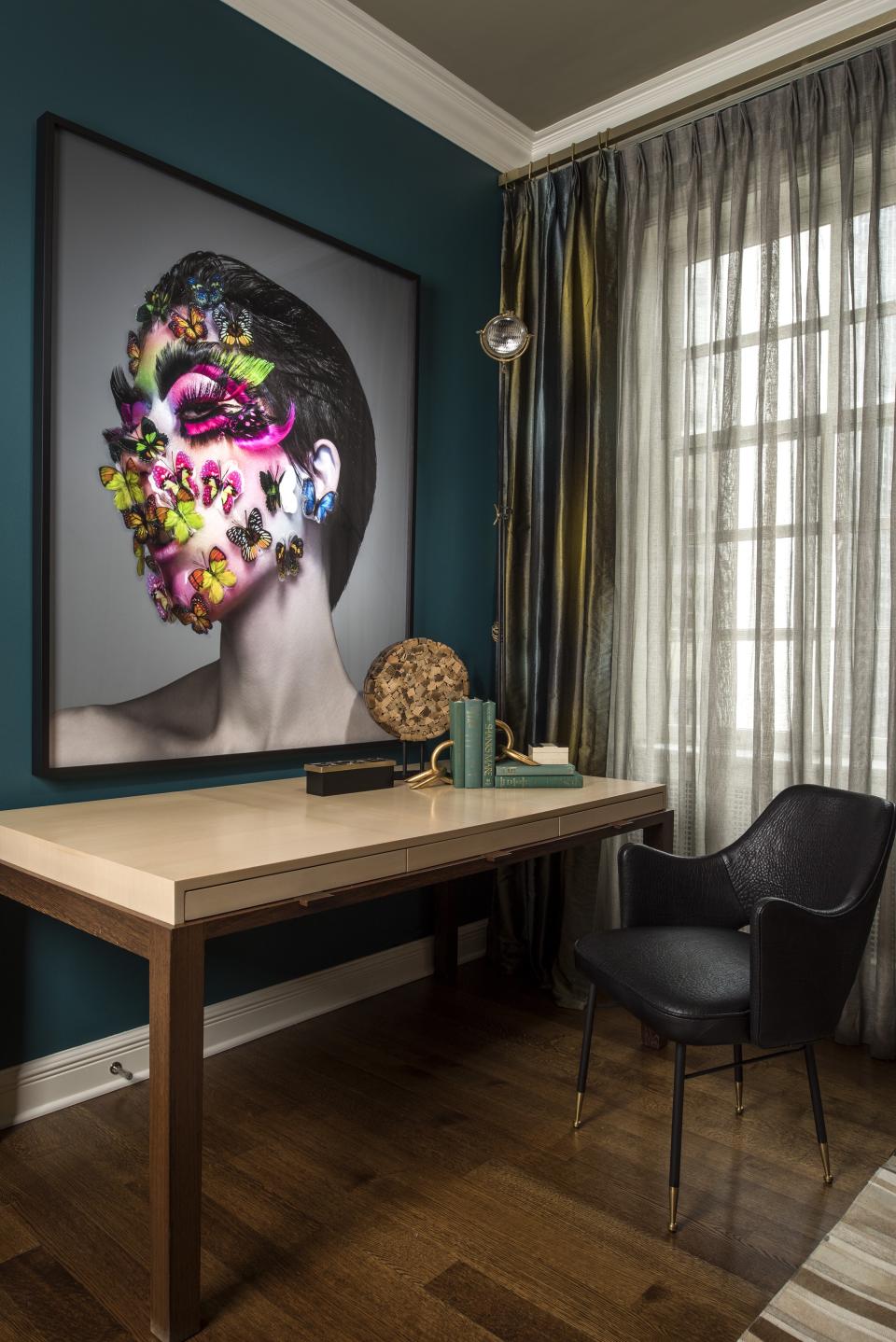4 Tips For Decorating Around Accent Furniture

While some design rules are open for debate - say, the best color to paint a dark room or the most stylish way to incorporate antiques - others are far more absolute. On most designers' non-negotiable list? Creating a focal point in every room. (Oh hello, accent accent chair.)
But unless you're a pro (or have the eye of one), decorating around a statement piece isn't always as easy as it looks. Do you lead with that vibrant, oversized family heirloom or bring it in as the pièce de résistance at the very end?
Chicago-based designer Donna Mondi says, "When we’re designing spaces, we have to decide who is going to be our leading lady and then allow her to be the star!"
Here, four ways to pull it off:
Start small.
Designer Joy Cho, whose debut furniture collection with Cloth & Company is anchored by bold, colorful and whimsical prints, says that if you're feeling really bold, go for that patterned couch or daybed. But if you need to ease into patterns, try a side chair, which can more easily complement larger pieces you already have.
Consider scale and proportion.
With an oversized, statement piece of art, for instance, "the supporting characters need to be able to hold their own but not distract from the focal point," Mondi says.
That means the scale of other items in the space should be strong enough in size, but calm enough visually to let the statement piece stand out. The same rule applies for furniture - both big and small, Mondi adds. "If you pair a dainty side table with a beefy Chesterfield sofa, the table would likely be overpowered and feel off balance."

Pick patterns wisely.
"If there are too many patterns in a space they’ll be fighting for your attention," Mondi says. Instead, create a focal point with pattern, by choosing just one, dynamic print. Then, keep the other colors neutral and solid.
If the plan is to mix things up, Mondi recommends making sure to vary the scales of the patterns so they don’t compete with each other. "It’s trickier to pull off this type of design, but the end result can be quite stunning!" she says.
[related id='340cbeaf-cbf7-4b37-aa77-5bf08e93157a' align='center'][/related]
The same rule applies on a patterned couch or chair. "You can still add patterned pillows," Cho adds. In addition to considering the scale of the patterns on your accessories and your statement piece accessories, you'll want to make sure that there is some unification in color between the two.

Go with your gut.
In other words, don't overthink it, Cho says. Check out more designer advice on how make a statement piece work in your home here.
While some design rules are open for debate - say, the best color to paint a dark room or the most stylish way to incorporate antiques - others are far more absolute. On most designers' non-negotiable list? Creating a focal point in every room. (Oh hello, accent accent chair.)
But unless you're a pro (or have the eye of one), decorating around a statement piece isn't always as easy as it looks. Do you lead with that vibrant, oversized family heirloom or bring it in as the pièce de résistance at the very end?
Chicago-based designer Donna Mondi says, "When we’re designing spaces, we have to decide who is going to be our leading lady and then allow her to be the star!"
Here, four ways to pull it off:
Start small.
Designer Joy Cho, whose debut furniture collection with Cloth & Company is anchored by bold, colorful and whimsical prints, says that if you're feeling really bold, go for that patterned couch or daybed. But if you need to ease into patterns, try a side chair, which can more easily complement larger pieces you already have.
Consider scale and proportion.
With an oversized, statement piece of art, for instance, "the supporting characters need to be able to hold their own but not distract from the focal point," Mondi says.
That means the scale of other items in the space should be strong enough in size, but calm enough visually to let the statement piece stand out. The same rule applies for furniture - both big and small, Mondi adds. "If you pair a dainty side table with a beefy Chesterfield sofa, the table would likely be overpowered and feel off balance."

Pick patterns wisely.
"If there are too many patterns in a space they’ll be fighting for your attention," Mondi says. Instead, create a focal point with pattern, by choosing just one, dynamic print. Then, keep the other colors neutral and solid.
If the plan is to mix things up, Mondi recommends making sure to vary the scales of the patterns so they don’t compete with each other. "It’s trickier to pull off this type of design, but the end result can be quite stunning!" she says.
[related id='340cbeaf-cbf7-4b37-aa77-5bf08e93157a' align='center'][/related]
The same rule applies on a patterned couch or chair. "You can still add patterned pillows," Cho adds. In addition to considering the scale of the patterns on your accessories and your statement piece accessories, you'll want to make sure that there is some unification in color between the two.

Go with your gut.
In other words, don't overthink it, Cho says. Check out more designer advice on how make a statement piece work in your home here.
You Might Also Like

